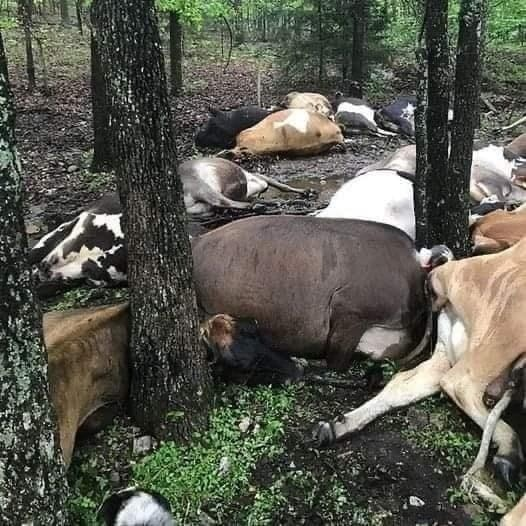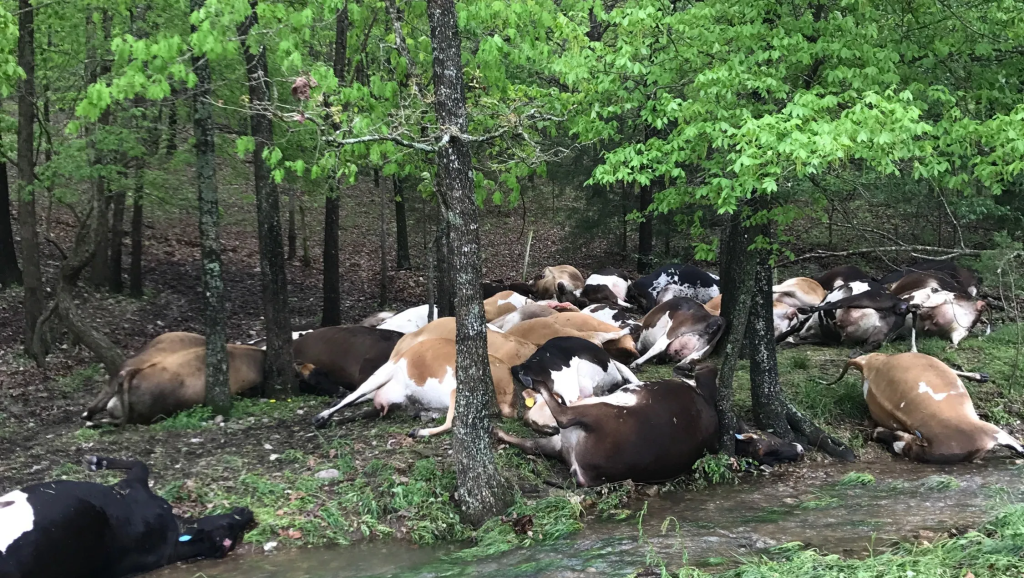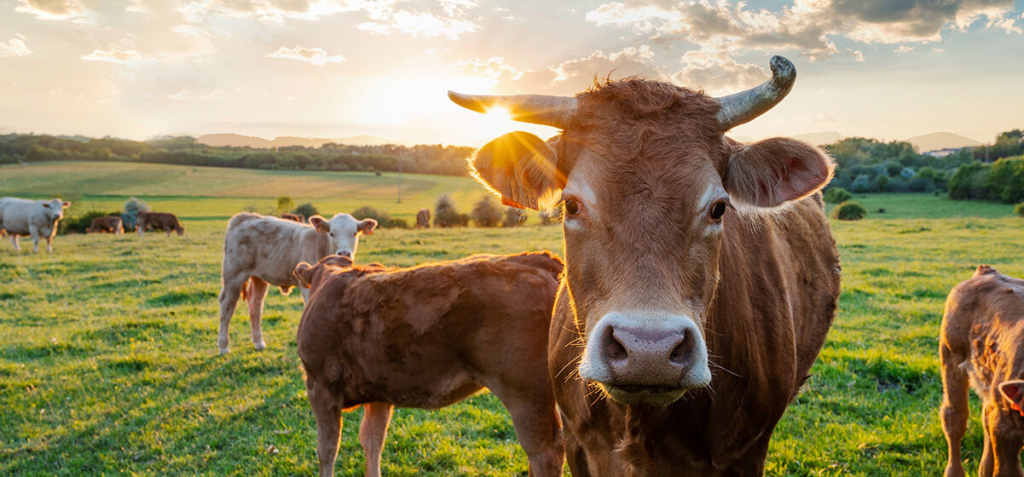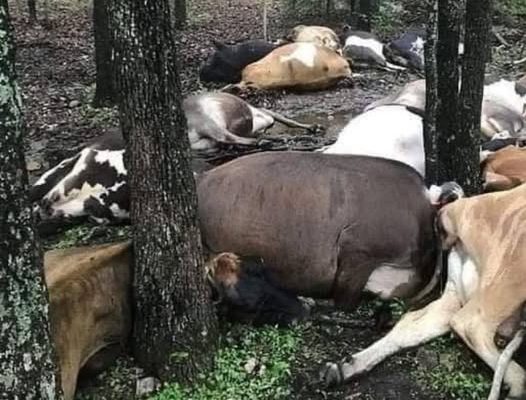Farming comes with its fair share of challenges, but nothing could have prepared Springfield dairy farmer Jared Blackwelder and his wife, Misty, for what they encountered one fateful morning. Their once-thriving herd of 32 dairy cows had perished in an instant, leaving behind a tragic scene that defied belief.
A Shocking Discovery: The Morning That Changed Everything

The day started like any other for the Blackwelder family. Jared and Misty had just finished feeding their dairy cows and were preparing for a routine afternoon. Then, out of nowhere, loud crashes echoed in the distance. The couple didn’t think much of it at the time, assuming it was just another passing storm.
But when Jared went to gather the cows for milking later that evening, he was met with an unthinkable sight. His entire herd lay lifeless, their bodies stacked in one big pile, motionless on the wet mulch. A scene so surreal, it seemed like something out of a nightmare.
A veterinarian was soon called to investigate, and the heartbreaking truth was confirmed—lightning had struck, wiping out the entire herd in a single moment.
How Could Lightning Kill 32 Cows at Once?
It’s hard to comprehend how a single lightning strike could cause such devastation. However, experts explain that the sheer power of lightning is often underestimated.
A single bolt can carry up to one billion volts of electricity—an amount powerful enough to kill anything in its path instantly. When lightning strikes the ground, especially in damp or muddy conditions, the electrical current spreads outward, creating a deadly electric field.
Cows, being herd animals, naturally cluster together during storms as a survival instinct. But in this case, that instinct proved fatal. The veterinarian and weather experts believe the cows had likely huddled beneath a tree or in an open area when the lightning struck, causing the lethal charge to surge through the entire group in an instant.
The Devastating Impact on the Blackwelder Farm
For small and medium-scale farmers like the Blackwelders, dairy cows aren’t just livestock—they’re the foundation of their livelihood. Each cow represents years of investment, care, and hard work.
The financial toll of losing 32 dairy cows is overwhelming. Each cow can be worth thousands of dollars, not including the ongoing costs of feed, veterinary care, and equipment. In one single moment, the Blackwelders lost their entire dairy operation, a blow that could take years to recover from.
But beyond the financial devastation, there’s the emotional toll. Farmers form strong bonds with their animals, tending to them every day, ensuring their health and well-being. Losing an entire herd so suddenly is not just a business setback—it’s a deeply personal tragedy.
Weather-Related Dangers Farmers Face Every Day
This tragic event underscores the ever-growing challenges farmers face due to unpredictable and extreme weather patterns.

Lightning strikes are only one of many weather-related threats. Other dangers include:
- Heavy Rain & Flooding – Excessive rainfall can destroy crops and damage infrastructure.
- Droughts – A lack of water can lead to lower crop yields and reduced food supply for livestock.
- Severe Storms & High Winds – These can cause structural damage to barns, silos, and equipment.
- Temperature Extremes – Unseasonably hot or cold weather can impact animal health and crop survival.
For farmers, adapting to these unpredictable changes is not just difficult—it’s becoming increasingly costly.
How Farmers Can Protect Livestock From Lightning Strikes
While lightning strikes cannot be prevented, there are measures farmers can take to reduce the risk of losing livestock:
- Install Lightning Protection Systems – Grounding rods and surge protectors can help redirect electrical currents away from barns and livestock areas.
- Provide Secure Shelter – Ensuring that barns and other shelters are properly grounded can protect animals during storms.
- Keep Animals Away from Trees & Open Fields – Encouraging livestock to seek shelter in enclosed barns rather than under trees can reduce the risk of mass casualties.
- Monitor Weather Conditions Closely – Farmers should stay updated on weather forecasts and take proactive measures during severe storms.
With climate patterns shifting and severe weather events becoming more common, taking preventative action has never been more important for farmers.
A Community Rallies Together

In times of tragedy, the strength of a community is often what carries people through. The loss of 32 cows is an unimaginable setback, but the Blackwelder family has not had to face this devastation alone.
Neighbors, fellow farmers, and members of the Springfield community have come together to offer support—whether through financial aid, emotional encouragement, or helping hands.
The farming community is built on resilience, and in the face of such a devastating loss, the unwavering support from others has given the Blackwelders hope for the future.
Final Thoughts: A Stark Reminder of Nature’s Unpredictability
The sudden and tragic loss of 32 dairy cows due to a lightning strike serves as a painful reminder of how unpredictable nature can be. For the Blackwelder family, the road to recovery will be long and challenging.
But if there’s one thing that remains certain, it’s the resilience of farmers—those who dedicate their lives to working the land, providing for communities, and overcoming even the most heartbreaking setbacks.
This tragedy is more than just a story of loss—it’s a testament to the strength and perseverance of those who make farming their way of life.



